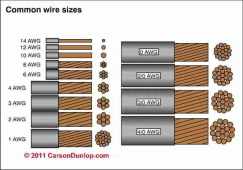Warpspeed
Solar Wizard
True,You dudes have all been advising Boris Johnson, I just know it.
But we we were really surprised when he actually believed us.
True,You dudes have all been advising Boris Johnson, I just know it.
20 cords! There always seems to be a burn ban, how am I ever going to get through that in my fire pit?11/64 of a cubit. Expect it to produce about 20 cords over a lustre.

As a mechanical engineer I try not to be too critical, the rule of the land seems to be "The engine was doing X RPM's" when what you really just wrong is "revolutionS per minuteS". I'm sure I'm guilty of Lifepo4 and KW typos, as long as its interpreted in the correct setting you just let it go. Everyone is strong in their own field.Yeah, as an engineer the mis-use of abbreviations and multipliers does grate somewhat (I even find it in supposedly "professional" equipment documentation!), although usually it's interpretable.
India opening a 100mW solar farm - Yeah, I get that, I have one on my calculator.
A 10KW heater - OK although I'm not sure what Kelvin-Watts are useful for.
Then along come the power-bank makers and specify capacity in mAh 'coz it gives a nice big number. Someone then asks "how big should a 33,000MAh power bank be?" - The size of a large building perhaps.
especially when the voltage of the bank isn’t specified…Someone then asks "how big should a 33,000MAh power bank be?" - The size of a large building perhaps.
The alt character set repeats… I think.Sorry, I didn't know there were "ALT" characters past 256? Where can you find this?
13,200 GWhImagine a 33,000MAh 400V bank… good LORD that would be huge…
and the second number is the number ofconductors. STRANDS
I believe you can purchase emp shields and whole home surge protectors. I may be wrong may be correctCME: Coronal Mass Ejection
ICME: Interplanetary Coronal Mass Ejection
CME is a Sun Fart. ICME is a Sun Fart that reaches Earth. More appropriate definitions will influence edits of this post. ?
Some folks are forecasting more of these over the next few years.
Maybe we should consider preparing for these in our solar systems, maybe not. That is a discussion for another thread.
Shouldn't "V - volts, a unit of voltage.", be a unit of Electromotive force? And "A battery's voltage is measured...", be, A battery's EMF is measured in volts - V?A - amps, a unit of current. Named after André-Marie Ampère.
V - volts, a unit of voltage. Named after Alessandro Volta.
W - watts, a unit of power. Named after James Watt.
Ω - ohms, a unit of resistance. Named after Georg Ohm.
h - hours
k - kilo (SI prefix for 1000)
K - Kelvin, a unit of temperature. Named after William Thomson, 1st Baron Kelvin. Not really relevant in solar discussions.
m - milli (SI prefix for 1/1000)
M - mega (SI prefix for 1000000)
Current is measured in amps - A
A battery's voltage is measured in volts - V
A battery's current capacity is measured in amp hours - Ah
I tweaked it to say "electric potential.Shouldn't "V - volts, a unit of voltage.", be a unit of Electromotive force?
A battery has a voltage (electric potential difference)."A battery's voltage is measured...", be, A battery's EMF is measured in volts - V?
Without intensity, a plain voltage will only generate a very low force (excepted at kilovolts on your hair)I tweaked it to say "electric potential.
For the Wikipedia entry on "Volt":
The volt is the derived unit for electric potential, electric potential difference (voltage), and electromotive force
A battery has a voltage (electric potential difference).
For sure and sometimes. Is mass m or M? The gravitational constant is always G.So what is C ?
Capacitance or the speed of light ?
AC vs A/C - AC is alternating current. A/C is air conditioning
c (lowercase) is a symbol for the speed of light (under specific conditions). C (uppercase) is the symbol for a coulomb, a unit of electric charge.So what is C ?
Capacitance or the speed of light ?
That's why we use the Greek alphabet so much.We need a bigger alphabet.
I use Google speak to to take your diction you don't know what you're going to get it sometimes goes to Mars and gets the strangest things but that was interesting about l i f e p04 I hadn't noticed that it was a zero instead of an oThe following are common units and their abbreviations. Note that unit abbreviations are case-sensitive. While some units can be understood when written incorrectly, some have a completely different meaning if the wrong case is used. Avoid any possible confusion or ambiguity and use the correct case.
A - amps, a unit of electric current. Named after André-Marie Ampère.
V - volts, a unit of electric potential. Named after Alessandro Volta.
W - watts, a unit of power. Named after James Watt.
Ω - ohms, a unit of electrical resistance. Named after Georg Ohm.
h - hours
k - kilo (SI prefix for 1000)
K - Kelvin, a unit of temperature. Named after William Thomson, 1st Baron Kelvin. Not really relevant in solar discussions.
m - milli (SI prefix for 1/1000)
M - mega (SI prefix for 1000000)
Current is measured in amps - A
A battery's voltage is measured in volts - V
A battery's current capacity is measured in amp hours - Ah
A battery's energy capacity is measured in watt hours - Wh. Wh is simply Ah x V. Many times it is shortened to kilowatt hours - kWh. Example: 5120Wh or 5.1kWh.
An inverter is measured in watts - W. Many times a value is shortened. 4000W can be written as 4kW. Really large systems could be in megawatts (MW) or even gigawatts (GW). Small electronics might be measured in milliwatts (mW).
A wire's resistance is measured in ohms - Ω. Many times the resistance is very small such as 0.002Ω commonly written as 2mΩ (two milliohms).
--------------------------
AC vs A/C - AC is alternating current. A/C is air conditioning
--------------------------
While not a unit, one common abbreviation that should be written correctly is for Lithium Iron Phosphate batteries. The correct written form is LiFePO₄ though most people find LiFePO4 is much simpler to type. LFP is a shorthand abbreviation understood in the context of this forum when discussing batteries.
Incorrect abbreviations would include LiFePO (lithium iron phosphorus oxide), LiFePo (lithium iron polonium), LiFePo4 (lithium iron tetra-polonium), LiFeP04 (using a zero instead of a capital O), LiFe (lithium iron), LifePo4 (wrong case on the F and O).
Note that there is a lithium-ion polymer battery typically written as LiPo. That is not at all the same as LiFePO₄. You do not want to confuse the two types. Though both of those types are specific examples of the more general lithium-ion (Li-ion) batteries.
Incorrect. It is PO for the molecule of Phosphate PO4I use Google speak to to take your diction you don't know what you're going to get it sometimes goes to Mars and gets the strangest things but that was interesting about l i f e p04 I hadn't noticed that it was a zero instead of an o

Thanks, Maddy.The following are common units and their abbreviations. Note that unit abbreviations are case-sensitive. While some units can be understood when written incorrectly, some have a completely different meaning if the wrong case is used. Avoid any possible confusion or ambiguity and use the correct case.
A - amps, a unit of electric current. Named after André-Marie Ampère.
V - volts, a unit of electric potential. Named after Alessandro Volta.
W - watts, a unit of power. Named after James Watt.
Ω - ohms, a unit of electrical resistance. Named after Georg Ohm.
h - hours
k - kilo (SI prefix for 1000)
K - Kelvin, a unit of temperature. Named after William Thomson, 1st Baron Kelvin. Not really relevant in solar discussions.
m - milli (SI prefix for 1/1000)
M - mega (SI prefix for 1000000)
Current is measured in amps - A
A battery's voltage is measured in volts - V
A battery's current capacity is measured in amp hours - Ah
A battery's energy capacity is measured in watt hours - Wh. Wh is simply Ah x V. Many times it is shortened to kilowatt hours - kWh. Example: 5120Wh or 5.1kWh.
An inverter is measured in watts - W. Many times a value is shortened. 4000W can be written as 4kW. Really large systems could be in megawatts (MW) or even gigawatts (GW). Small electronics might be measured in milliwatts (mW).
A wire's resistance is measured in ohms - Ω. Many times the resistance is very small such as 0.002Ω commonly written as 2mΩ (two milliohms).
--------------------------
AC vs A/C - AC is alternating current. A/C is air conditioning
--------------------------
While not a unit, one common abbreviation that should be written correctly is for Lithium Iron Phosphate batteries. The correct written form is LiFePO₄ though most people find LiFePO4 is much simpler to type. LFP is a shorthand abbreviation understood in the context of this forum when discussing batteries.
Incorrect abbreviations would include LiFePO (lithium iron phosphorus oxide), LiFePo (lithium iron polonium), LiFePo4 (lithium iron tetra-polonium), LiFeP04 (using a zero instead of a capital O), LiFe (lithium iron), LifePo4 (wrong case on the F and O).
Note that there is a lithium-ion polymer battery typically written as LiPo. That is not at all the same as LiFePO₄. You do not want to confuse the two types. Though both of those types are specific examples of the more general lithium-ion (Li-ion) batteries.


